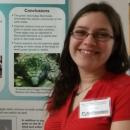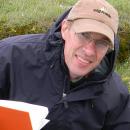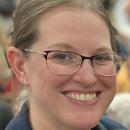Follow us on Instagram @NEIUbiology, Facebook and LinkedIn.
Biology Department Advising
Email us at biologyadvising@neiu.edu for guidance on course selection, registration and graduation requirements.

Bachelor’s Degree, Indiana University
Ph.D., University of Illinois, College of Medicine
Rumschlag-Booms, E. and Rong, L. Influenza A Virus Entry: Implications in Virulence and Future Therapeutics. Advances in Virology. January 2013.
Ahmet Dirim Arslan, Xiaolong He, Minxiu Wang, Emily Rumschlag-Booms, Lijun Rong, and William T. Beck. A High-Throughput Assay to Identify Small-Molecule Modulators of Alternative Pre-mRNA Splicing. J Biomol Screen 18(2):180-90 (2013).
Rumschlag-Booms E, Hongjie Zhang, D Doel Soejarto, Harry H S Fong, Lijun Rong. One-stone-two-birds, an antiviral screening protocol. J Antiviral Antiretroviral (2011), PMID 22140608.
Rumschlag-Booms E, Guo Y, Wang J, Caffrey M, Rong L., 2009. Comparative analysis between a low pathogenic and a high pathogenic influenza H5 hemagglutinin in cell entry. Virology Journal 2009, 6:76; June 10.
Guo Y, Rumschlag-Booms E*, Wang J, Xiao H, Yu J, Wang J, Guo L, Gao GF, Cao Y, Caffrey M, Rong L., 2009. Analysis of hemagglutinin-mediated entry tropism of H5N1 avian influenza. Virology Journal, 6:39; April 2. *Co-first author
Manicassamy B, Wang J, Rumschlag E, Tymen S, Volchkova V, Volchkov V, Rong L, 2007. Characterization of Marburg virus glycoprotein in viral entry. Virology, 358:79-88.
Room BBH 352D
Northeastern Illinois University
5500 North St. Louis Avenue
Chicago, IL 60625
United States

Keywords: Drosophila, DNA repair, aging, DNA2, Drosophila Activity Monitor
Ph.D. in Molecular and Environmental Toxicology from the University of Wisconsin-Madison
B.S. in Resource Ecology and Management from the School of Natural Resources and Environment, University of Michigan
Undergraduate students are underlined
Krieger, K.L., Mann, E.K., Lee, K.G, Bolterstein, E., Jebakumar, D., Ittmann, M.M., Dal Zotto, V.L., Shaban, M., Sreekumar, A., Gassman, N.R.. (2023) Spatial mapping of the DNA adducts in cancer. DNA Repair. 128:103529.
Mitchell, C., Becker, V., DeLoach, J., Nestore, E., Bolterstein, E., & Kohl, K. P. (2022). The Drosophila Mutagen-Sensitivity Gene mus109 Encodes DmDNA2. Genes, 13(2), 312.
Epiney, D. G., Salameh, C., Cassidy, D., Zhou, L. T., Kruithof, J., Milutinović, R., Andreani, T. S., Schirmer, A. E., & Bolterstein, E. (2021). Characterization of Stress Responses in a Drosophila Model of Werner Syndrome. Biomolecules, 11(12), 1868.
Cassidy, D., Epiney D.G., Salameh, C., Zhou, L.T., Salomon, R.N., Schirmer, A.E., McVey, M., and Bolterstein, E. (2019) Evidence for premature aging in a Drosophila model of Werner syndrome. Experimental Gerontology. 127, 110733.
Bolterstein, E., Rivero, R., Marquez, M. and McVey, M. (2014) The Drosophila Werner exonuclease participates in an exonuclease-independent response to replication stress. Genetics. 197(2): 643-52.
Room BBH 352A
Northeastern Illinois University
5500 North St. Louis Avenue
Chicago, IL 60625
United States

Keywords: Physiology, natural products, environmental monitoring, education
Ph.D. in Biological Sciences from the University of Missouri-Columbia
B.S. in Biology from the University of Northern Iowa
Undergraduate students are underlined
von Konrat M, Campbell T, Carter B, Greif M, Bryson M, Larraín J, Trouille L, Cohen S, Gaus E, Qazi A, Ribbens E, Livshultz T, Walker TJ, Suwa T, Peterson T, Rodriguez Y, Vaughn C, Yang C, Aburahmeh S, Carstensen B, de Lange P, Delavoi C, Strauss K, Drag J, Aguero B, Snyder C, Martinec J, Smith A (2018) Using citizen science to bridge taxonomic discovery with education and outreach. Applications in Plant Sciences 6 (2): e1023. https://doi.org/10.1002/aps3.
Pivarski M, von Konrat M, Campbell T, Qazi-Lampert AT, Trouille L, Wade H, Davis A, Aburahmeh S, Aguilar J, Alb C, Alferes K, Barker E, Bitikofer K, Boulware KJ, Bruton C, Cao S, Corona Jr. A, Christian C, Demiri K, Evans D, Evans NM, Flavin C, Gillis J, Gogol V, Heublein E, Huang E, Hutchinson J, Jackson C, Jackson OR, Johnson L, Kirihara M, Kivarkis H, Kowalczyk A, Labontu A, Levi B, Lyu I, Martin-Eberhardt S, Mata G, Martinec JL, McDonald B, Mira M, Nguyen M, Nguyen P, Nolimal S, Reese V, Ritchie W, Rodriguez J, Rodriguez Y, Shuler J, Silvestre J, Simpson G, Somarriba G, Ssozi R, Suwa T, Syring C, Thirthamattur N, Thompson K, Vaughn C, Viramontes MR, Wong CS, Wszolek L (2022) People-Powered Research and Experiential Learning: Unravelling Hidden Biodiversity. Research Ideas and Outcomes 8: e83853. https://doi.org/10.3897/rio.8.
LIU Min-guo, Campbell T, Wei LI, WANG Xi-qing. A skeleton-image-based method for analyzing architectural diversity in maize plants. Journal of Integrative Agriculture. 2023, 22(12): 0 https://doi.org/10.1016/j.jia.
Northeastern Illinois University
5500 North St. Louis Avenue
Chicago, IL 60625
United States

Developmental Biology
Cancer Biology
Keywords: Neurobiology, developmental biology, cancer biology, zebrafish, STEM education
Ph.D. in Neuroscience, Northwestern University
B.A. in Biology, University of Colorado at Colorado Springs
High School Diploma, Mundelein High School
Monick, Sarah, Vineet Mohanty, Mariam Khan, Gowtham Yerneni, Raj Kumar, Jorge A. Cantu, Shunsuke Ichi, Guifa Xi, Bai Ram Singh, Tadanori Tomita, and Chandra Shekhar Mayanil. "A Phenotypic Switch of Differentiated Glial Cells to Dedifferentiated Cells Is Regulated by Folate Receptor α." STEM CELLS (2019).
Wiwatpanit, Teerawat*, Sarah M. Lorenzen*, Jorge A. Cantú*, Chuan Zhi Foo, Ann K. Hogan, Freddie Márquez, John C. Clancy, Matthew J. Schipma, Mary Ann Cheatham, Anne Duggan, and Jaime Garcia-Anoveros. "Trans-differentiation of outer hair cells into inner hair cells in the absence of INSM1." Nature 563, no. 7733 (2018): 691. *Equal Contribution
Nimrod Miller, Zhihua Feng, Brittany M. Edens, Ben Yang, Han Shi, Christie C. Sze, Benjamin Taige Hong, Susan C. Su, Jorge A. Cantu, Jacek Topczewski, Thomas O. Crawford, Chien-Ping Ko, Charlotte J. Sumner, Long Ma, Yong-Chao Ma. "Non-aggregating tau phosphorylation by cyclin-dependent kinase 5 contributes to motor neuron degeneration in spinal muscular atrophy." Journal of Neuroscience 35, no. 15 (2015): 6038-6050.
Remis, Natalie N., Teerawat Wiwatpanit, Andrew J. Castiglioni, Emma N. Flores, Jorge A. Cantú, and Jaime Garcia-Anoveros. "Mucolipin co-deficiency causes accelerated endolysosomal vacuolation of enterocytes and failure-to-thrive from birth to weaning." PLoS genetics 10, no. 12 (2014): e1004833.
Cantu, Jorge A., G. Parker Flowers, and Jacek Topczewski. "Notum homolog plays a novel role in primary motor innervation." Journal of Neuroscience 33, no. 5 (2013): 2177-2187.
Follow our lab on Twitter! @ProfCantu
Room BBH 310
Northeastern Illinois University
5500 North St. Louis Avenue
Chicago, IL 60625
United States
B.S. in Biology, Northeastern Illinois University
Israel is an alumnus of NEIU, where he completed a bachelor's degree in Biology. During his time here as an undergrad he researched Rhodiola integrifolia ssp. Leedyi genetic variability in various populations by using microsatellite data. Afterward, he worked on the Biology lab prep team, where he got to interact with both faculty and students. This experience inspired him to continue working at NEIU.
Room BBH 358G
Northeastern Illinois University
5500 North St. Louis Avenue
Chicago, IL 60625
United States
M.S. in Microbiology, Arizona State University
B.A. in Biology and Spanish, Knox College
Kip came to NEIU after working in biocides research and development at Dow Chemical, and later as a research geneticist testing new drugs for toxicity in mammalian immune cell lines. At Arizona State University he enjoyed a National Science Foundation Fellowship where he was able to present his virology research to high school students to inspire a new generation of scientists. His master’s degree resulted in a publication as well as a patented method to facilitate genetic engineering in viruses. His interest in sharing his love for microbiology compelled him to seek employment in a university setting.
BBH 358E
Northeastern Illinois University
5500 North St. Louis Avenue
Chicago, IL 60625
United States
B.S. in Biology, Northeastern Illinois University
Sara is an alumna of NEIU, where she completed a bachelor's degree in Biology and a minor in Environmental Studies. During her time here as an undergraduate she researched diatoms and the epizoic community of microscopic organisms living on the shells of captive snapping turtles. Sara thrived with the experiences brought to her by doing research at NEIU and wants to help students take advantage of the resources of the Biology Department so they can continue to grow as biologists and help others better understand the world we're living in.
Room BBH 358C
Northeastern Illinois University
5500 North St. Louis Avenue
Chicago, IL 60625
United States
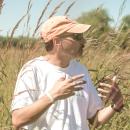
Since being at NEIU, I have focused on the ecology of prairies, particularly on the effect of fire on prairie communities.
Keywords: Prairies, Fire, Ecosystem Dynamics
Ph.D. from University of Illinois at Urbana-Champaign
M.S. from University of Illinois at Urbana-Champaign
B.S. from University of Illinois at Urbana-Champaign
Klaper, R., S. Frankel, and M.R. Berenbaum (1996). Anthocyanin content and UVB sensitivity in Brassica rap. Photochemistry and Photobiology, 63(6), 811-813.
Frankel, S., G.E. Robinson, and M.R. Berenbaum. Antioxidant capacity and correlated characteristics of 14 unifloral honeys. Journal of Apicultural Research. b1998.b37(1):27-31.
Frankel, S., & Berenbaum, M. (1999). Effects of Light Regime on Antioxidant Content of Foliage in a Tropical Forest Community 1. Biotropica, 31(3), 422-429.
Room BBH 358B
Northeastern Illinois University
5500 North St. Louis Avenue
Chicago, IL 60625
United States

Keywords: invasive plant species, community ecology, habitat restoration
Ph.D., Ecology, University of Chicago
Post-doc., Ecology, Loyola University Chicago
M.S., Biology, Florida International University
B.S., Biology, Florida International University
A.A., Biology, Miami-Dade Community College
Undergraduate students are underlined
Geddes, P., L. Murphy, Y. Astudillo-Scalia, D. Blasini, S. Nugent, M. J. Rios, A. Schirmer, and J. P. Olfelt. 2021. Microsatellite markers reveal unprecedented high frequencies of hybridization among Typha species in the Midwestern US. Wetlands 41(2021): 1-9.
Pini, A.K. and P. Geddes. 2020. Fungi are capable of mycoremediation of river water contaminated with E. coli. Water, Air, and Soil Pollution 231:83.
Geddes, P. 2019. The invasion of the cattails. Podcast. In Defense of Plants. http://www.indefenseofplants.com/podcast/2019/4/21/ep-209-invasion-of-the-cattails
Volesky, L.A., S. Iqbal, J.J. Kelly, and P. Geddes. 2018. Relationships of native and exotic Phragmites australis to wetland ecosystem properties. Wetlands 38(3):577-589.
Room BBH 340H
Northeastern Illinois University
5500 North St. Louis Avenue
Chicago, IL 60625
United States
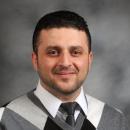
Keywords: hyperglycemia, Methylglyoxal, oxidative stressors, glutathione
M.S. in Molecular Biology from Northeastern Illinois University
M.S. in Veterinary Microbiology and Immunology from the College of Veterinary Medicine, Iraq
B.V.M.&S. (Bachelor of Veterinary Medicine and Surgery) from the College of Veterinary Medicine, Iraq
Gorgis, T., Habib, N. and Mungre, S. (2010), Effect of Methylglyoxal on BV-2 Cells. FASEB J, 24: lb132-lb132. https://doi.org/
Habib, N. and Mungre, S. (2010), Oxidative Stress Injury To PC12 Cells Under Glycating Conditions. FASEB J, 24: 485.7-485.7. https://doi.org/
Habib, N., Goswami, G. and Mungre, S. (2010), Inflammatory Cytokines Induce Oxidative Stress And Apoptosis In PC12 Cells. FASEB J, 24: 485.8-485.8. https://doi.org/
Room BBH 358C
Northeastern Illinois University
5500 North St. Louis Avenue
Chicago, IL 60625
United States
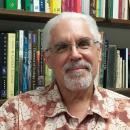
Keywords: Plant ecology, ecology of woody plants, invasion ecology, population ecology
Ph.D. in Ecology from the University of Michigan
M.S. in Botany (Field Naturalist Program) from the University of Vermont
B.S. in Biology from the College of William & Mary
Room BBH 340F
Northeastern Illinois University
5500 North St. Louis Avenue
Chicago, IL 60625
United States
Ph.D. in Molecular, Cellular and Developmental Biology from Indiana University
B.S. in Biology and M.S. in Zoology from Arizona State University
Kimble, M. and A. Schirmer. (2012) General Genetics: Laboratory Manual. Kendall/Hunt Publishing Co. Dubuque, Iowa
Northeastern Illinois University
5500 North St. Louis Avenue
Chicago, IL 60625
United States
B.S. in Biology, Northeastern Illinois University
Born in Celaya, Guanajuato, and raised in Chicago, I recently graduated with a bachelor's in Biology from Northeastern Illinois University. I always knew I wanted to major in biology but didn’t know what to do with the degree. Luckily a friend pointed me toward working with youth in nature for the Student Conservation Association. Later, I joined SCA’s All Women Crew and after four years spent a season leading restoration projects for the Chicago Park District. My current role is Naturalist for Gensburg-Markham Prairie, a 100-acre tallgrass prairie remnant that is an Illinois Nature Preserve and a National Natural Landmark.
I am passionate about equitable access to nature. I hope to use my community engagement experience to bring more visitors to Gensburg-Markham Prairie from the surrounding communities and from across the city. I enjoy connecting with people and building bridges between communities of color and nature. I am very happy to have joined the Biology Department's team to preserve the prairie and include different groups of people in the process.
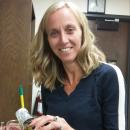
Ph.D. in Molecular Biology from Loyola University Chicago (Stritch School of Medicine) and University of Chicago
B.S. in Biology from Boston College
Spear TT, Riley TP, Lyons GE, Callender GG, Roszkowski JJ, Wang Y, Simms PE, Scurti GM, Foley KC, Murray DC, Hellman LM, McMahan RH, Iwashima M, Garrett-Mayer E, Rosen HR, Baker BM, Nishimura MI. Hepatitis C virus-cross-reactive TCR gene-modified T cells: a model for immunotherapy against diseases with genomic instability.J Leukoc Biol. 2016 Sep;100(3):545-57.
Zloza A, Lyons GE, Schenkel JM, Moore TV, Lacek AT, O’Sullivan JA, Varanasi V, et al. NKGD2 signalling on CD8+ T cells represses T-bet and rescues CD4- unhelped CD8 + T cell memory recall but not effector responses. Nature Medicine. 2012 Feb 26; 18(3):422-8.
Zloza A, Lyons GE, Chlewicki LK, Kohlhapp FJ, O'Sullivan JA, Lacek AT, Moore TV, Jagoda MC, Kumar V, Guevara-Patiño JA. Engagement of NK receptor NKG2D, but not 2B4, results in self reactive CD8+ T cells and autoimmune vitiligo. Autoimmunity. 2011 Dec; 44(8):599-606.
Zloza A, Jagoda MC, Lyons GE, Graves MC, Kohlhapp FJ, O'Sullivan JA, Lacek AT, Nishimura MI, Guevara-Patiño JA. CD8 co-receptor promotes susceptibility of CD8+ T cells to transforming growth factor-β (TGF-β)-mediated suppression. Cancer Immunol Immunother. 2011 Feb; 60(2):291-7.
Lyons, GE, McCracken J, O’Sullivan J, Guevara-Patino J. RAE1-e Signaling Rescues “Helpless” CD8+ T cell Memory Responses. Journal of Exp. Medicine. January, 2011.
Room BBH 352G
Northeastern Illinois University
5500 North St. Louis Avenue
Chicago, IL 60625
United States

Keywords: Oxidative stress, hyperglycemia, curcumin, milk sIgA
Ph.D. in Biochemistry from Maharaja Sayajirao University of Baroda
M.S., in Biochemistry from Pune University
B.S. in Chemistry from Pune University
Faculty advisor: Beta Beta Beta National Biological Society
Room BBH 340E
Northeastern Illinois University
5500 North St Louis Avenue
Chicago, IL 60625
United States
M.S., Northeastern Illinois University
B.S., Purdue University
Sanchez, J.C., Carrillo, M., Pandey, S., Noda, M., Aldama, L., Feliz, D., Claesson, E., Wahlgren, Y., Tracy, G., Duong, P., Nugent, A.C., Field, A., Šrajer, V., Kupitz, C., Iwata, S., Nango, E., Tanaka, R., Tanaka, T., Fangjia, L., Tono, K., Owada, S., Westenhoff, S., Schmidt, M., and Stojković, E.A. (2019) "High-resolution crystal structures of a myxobacterial phytochrome at cryo and room temperatures" Structural Dynamics. 6: 054701.
Woitowich, N.C., Halavaty, A.S., Waltz, P., Kupitz, C., Valera, J., Tracy, G., Gallagher, K.D., Claesson, E., Nakane, T., Pandey, S., Nelson, G., Tanaka, R., Nango, E., Mizohata, E., Owada, S., Tono, K., Joti, Y., Nugent, A.C., Patel, H., Mapara, A., Hopkins, J., Duong, P., Bizhga, D., Kovaleva, S.E., St. Peter, R., Hernandez, C.N., Ozarowski, W.B., Roy-Chowdhuri, S., Yang, J., Edlund, P., Takala, H., Ihalainen, J., Brayshaw, J., Norwood, T., Poudyal, I., Fromme, P., Spence, J.C.H., Moffat, K., Westenhoff, S., Schmidt, M., and Stojković, E.A. (2018) "Structural basis for light control of cell development revealed by crystal structures of a myxobacterial phytochrome" IUCrJ. 5: 619-634.
Björling, A., Berntsson, O., Takala, H., Gallagher, K.D., Patel, H., Gustavsson, E., St. Peter, R., Duong, P., Nugent, A., Zhang, F., Berntsen, P., Appio, R., Rajkovic, I., Lehtivuori, H., Panman, M.R., Hoernke, M., Niebling, S., Harimoorthy, R., Lamparter, T., Stojković, E.A., Ihalainen, J.A., Westenhoff, S. (2015) “Ubiquitous Structural Signaling in Bacterial Phytochromes.” Journal of Physical Chemistry Letters. 6: 3379–3383.
Room BBH 358 B
Northeastern Illinois University
5500 North St. Louis Avenue
Chicago, IL 60625
United States
Keywords: Pedagogy, scientific identity, learning support, learning
Ph.D. in Evolutionary Biology from University of Chicago
B.S. in Biology from University of Iowa
Nuss K, Warneke M. Life span, reproductive output, and reproductive opportunity in captive Goeldi's monkeys (Callimico goeldii). Zoo Biol. 2010 Jan-Feb;29(1):1-15. PubMed PMID: 20131357.
Room BBH 217A
Northeastern Illinois University
5500 North St. Louis Avenue
Chicago, IL 60625
United States
Ph.D., University of Minnesota (Plant Biological Sciences)
B.A., North Park University (Chemistry major, minors in Biology and German)
BBH 358A
Northeastern Illinois University
5500 North Saint Louis Avenue
Chicago, IL 60625
United States
Conservation biology
Restoration ecology
M.S. in Plant Biology and Conservation from Northwestern University
B.A. in Environmental Studies from Knox College
Yost, J. L., L. M. Egerton-Warburton, K. M. Schreiner, C. E. Palmer, and A. E. Hartemink. (2016). Impact of Restoration and Management on Aggregation and Organic Carbon Accumulation in Urban Grasslands. Soil Sci. Soc. Am. J. 80:992-1002. doi:10.2136/sssaj2015.10.0383
Middleton, E. L., S. Richardson, L. Koziol, C.E. Palmer, Z. Yermakov, J. A. Henning, P. A. Schultz, and J. D. Bever. (2015). Locally adapted arbuscular mycorrhizal fungi improve vigor and resistance to herbivory of native prairie plant species. Ecosphere 6(12):276. doi:10.1890/ES15-00152.1
Yost, J., C. Palmer, and L. M. Egerton-Warburton. (2014). The contribution of soil aggregates to carbon sequestration in restored urban grasslands. In: A. Hartemink and K. McSweeney (Eds.) Progress in Soil Science Series: Soil Carbon (147-154). Heidelburg, Germany: Springer.
Room BBH 352G
Northeastern Illinois University
5500 North St. Louis Avenue
Chicago, IL 60625
United States
Ph.D., Northwestern University
Room BBH 217A
Northeastern Illinois University
5500 North St. Louis Avenue
Chicago, IL 60625
United States

Keywords: Neurobiology, vision, assistive technology, blind/visually impaired, haptics
Ph.D. in Biological Psychology from The University of Chicago
B.A. in Psychology from the University of Illinois at Chicago
Undergraduate students are underlined
Prete FR, Schirmer AE, Patel S, Carrion C, Prete GM, van Alphen B, Svenson GJ (2019). The first analysis of discontinuous ventilatory abdominal pulsations in praying mantises. Fragmenta Entomologica, 51: 29-39 https://rosa.uniroma1.it/
Schirmer A, Prete FR, Mantes ES, Urdiales AF, Bogue W (2014) Circadian rhythms affect electroretinogram, compound eye color, striking behavior and locomotion of the praying mantis Hierodula patellifera. Journal Experimental Biology, 217: 3853-3861 https://pubmed.ncbi.nlm.nih.
Prete FR, R Theis, Dominguez S, Bogue W (2013) Visual Stimuli Eliciting Tracking and Striking in the Praying Mantises, Parasphendale affinis (Giglio-Tos), Popa spurca (Stål), and Sphodromantis lineola (Burmeister). Journal of Experimental Biology, 216: 4443-53
Popkiewicz B, FR Prete (2013) Macroscopic Characteristics of the Praying Mantis Electroretinogram, Journal of Insect Physiology, 59: 812–823
Prete FR, Dominguez S, Komito JL, Theis R, Dominguez JM, Hurd LE, Svenson GJ, (2013) Appetitive Responses to Computer-Generated Visual Stimuli by Female Rhombodera basalis, Deroplatys lobata, Hierodula membranacea, and Miomantis sp. (Insecta: Mantodea), Journal of Insect Behavior, 26: 261-282. https://link.springer.com/
Room BBH 344F
Northeastern Illinois University
5500 North St. Louis Avenue
Chicago, IL 60625
United States
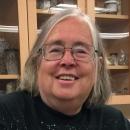
Keywords: spite, violence, dehumanization, animal behavior
Ph.D. in Chronobiology and Protozoology from the University of Toronto
B.S. in Biology from Northeastern Illinois University
A Totally, Unabashedly Incomplete Book About Bugs (Prairie House Gallery Press, 2018)
Room BBH 352B
Northeastern Illinois University
5500 North St. Louis Avenue
Chicago, IL 60625
United States

Evolution
Pigment physiology
Senescence
Science communication
Keywords: coloration, evolutionary ecology, pigments, senescence, scicomm
Ph.D. in Evolutionary Biology from Dartmouth College
B.A. in Zoology from Indiana University Bloomington
Undergraduate students are underlined.
Maki, Erik T., Georgina Jaimes, and Beth A. Reinke. Water turbidity and plant density influence painted turtle shell shape. Herpetologica 79(3). DOI: https://doi.org/10.1655/Herpetologica-D-22-00006.
Horn, Kelsey, Grascen Shidemantle, Isabela Velasquez, Emily Ronan, Jurnee Blackwood, Beth A. Reinke, and Jessica Hua. 2023. Evaluating the interactive effects of artificial light at night and background color on tadpole crypsis, background adaptation efficacy, and growth. Environmental Pollution (2023): 122056.
McKnight, Donald T….Paige Boban…Beth A. Reinke…and 25 other authors. Nocturnal basking in freshwater turtles: a global assessment. 2023. Global Ecology and Conservation. DOI: https://doi.org/10.1016/j.gecco.2023.e02444
Reinke, Beth A…. Bronikowski, A., and David Miller (+112 authors). Diverse aging rates in ectothermic tetrapods provide insights for the evolution of aging and longevity. 2022. Science 376 (6600): 1459-1466. DOI: 10.1126/science.abm0151
Reinke, Beth A., David Miller, and Fredric Janzen. 2019. What have long-term studies taught us about population dynamics? Annual Review of Ecology, Evolution, and Systematics 50:11.1-11.18. Invited. DOI: 10.1146/annurev-ecolsys-110218-024717.
Read about Dr. Reinke's research with turtles and how you can adopt a turtle!
Room BBH 352F
Northeastern Illinois University
5500 North St. Louis Avenue
Chicago, IL 60625
United States
M.S. in Microbiology and Immunology, University of Illinois at Chicago
Room BBH 352B
Northeastern Illinois University
5500 North St. Louis Avenue
Chicago, IL 60625
United States
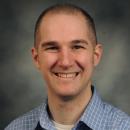
Ph.D. in Neuroscience from Northwestern University
B.S. in Biology from Elmhurst College
Undergraduate students are underlined
Schirmer AE, Kumar V, Schook A, Song EJ, Marshall MS and Takahashi JS (2023). Cry1 expression during postnatal development is critical for the establishment of normal circadian period. Front. Neurosci. 17:1166137. doi: 10.3389/fnins.2023.1166137
Epiney, D., Salameh, C., Cassidy, D., Zhou, L., Kruithof, J., Milutinović, R., Andreani, T., Schirmer, A.E., and Bolterstein, E. (2021). Characterization of Stress Responses in a Drosophila Model of Werner Syndrome. Biomolecules, 11(12)
Schirmer, A. E., Gallemore, C., Liu, T., Magle, S., DiNello, E., Ahmed, H., & Gilday, T. (2019). Mapping behaviorally relevant light pollution levels to improve urban habitat planning. Scientific reports, 9(1), 1-13.
Smarr, B. L. and Schirmer, A. E. (2018). 3.4 million real-world learning management system logins reveal the majority of students experience social jet lag correlated with decreased performance. Scientific Reports 8, 4793.
Schirmer, A. E., Prete, F. R., Mantes, E. S., Urdiales, A. F., Bogue, W. (2014) Circadian Rhythms Affect the Electroretinogram, Compound Eye Color, Striking Behavior, and Locomotion of the Praying Mantis, Hierodula patellifera (Serville). The Journal of Experimental Biology 217: 3853-3861.
Room BBH 352E
Northeastern Illinois University
5500 North St. Louis Avenue
Chicago, IL 60625
United States

Ph.D., Environmental Biology, University of Louisville
B.S., Biology, University of Notre Dame
Slate, J. E., Adler, R. F., Hibdon Jr., J. E., Mayle, S. T., Kim, H., and Srinivas, S. 2019. A multidisciplinary approach to incorporating computational thinking in STEM courses for preservice teachers. In (R. M. Reardon & J. Leonard, eds) Integrating Digital Technology in Education, Information Age Publishing Inc.: Charlotte, N.C.
SCIENTIFIC MODELING IN EDUCATION:
Introductory biology students seldom have the opportunity to build or modify scientific models, despite their importance in bioscience research. Thus, I am developing educational activities for beginning students who are new to modeling. With support from a STEM+C grant from the National Science Foundation, I worked with a group of biology, computer science, math, and education students to create a simulation that applies the Susceptible-Infected-Recovered (SIR) model, commonly utilized by public health officials to predict the spread of disease, to simulate a mosquito-borne viral outbreak. In addition to using the simulation to test disease-causing scenarios, students can expand upon the model by writing computer code. It is thus an excellent exercise to show beginning biology students how computer modeling and simulation is used to examine biological systems.
BIOLOGICAL INDICATORS OF WATER QUALITY:
As sessile aquatic invertebrates, native freshwater mussels have great potential for use as biological indicators. Because they live on the river bottom and are filter feeders, they are affected by both habitat degradation and water quality. In addition, both mussels and sponges leave remains in the sediment that provide a historical record. With collaborators Laura Sanders and Jean Hemzacek in the Department of Earth Science, our students recently surveyed the mussel community in the Chicago River. According to a biological index developed by the Illinois Department of Natural Resources, our data indicate a water quality value of moderate, which is promising for a river in a major metropolitan area such as Chicago. Our study was supported by a pilot grant from the United States Department of Agriculture.
FRESHWATER SPONGE TAXONOMY:
Although common in aquatic habitats in the Midwest, freshwater sponges are understudied due to lack of knowledge of the microscopic features that allow species to be differentiated. Thus, students and I are collecting sponges from local rivers, lakes, and wetlands and quantifying the variation in morphological characteristics. In addition, we are identifying to species the freshwater sponges held in the Field Museum of Natural History’s collection. Currently, the Field Museum’s freshwater sponge collection is difficult for the research community to access, because the majority of their specimens have not been identified to species. My students are making microscope slides of Field Museum specimens and measuring microscopic features useful in the taxonomic identification of species.
FLORA AND FAUNA OF SPHAGNUM BOGS:
The majority of wetland habitat in the Midwest has been drained for agriculture and development. Of the wetlands that remain, quaking bogs are among the most unique and beautiful. Plants- even tamarack trees- grow on floating mats of Sphagnum moss, which rise and fall with water levels. Microscopic organisms, about which little is known, also live on the floating moss. These small flora and fauna include sponges, a primitive animal that is well studied in oceans but not in freshwater habitats. Species new to science, including single-celled protists such as algae and amoebae, have also been recently discovered living on Sphagnum. Students and I characterized the microscopic flora and fauna living on Sphagnum moss. In addition to collecting modern samples of Sphagnum from bogs in Illinois, Wisconsin and Indiana, we examined Sphagnum samples collected for over one hundred years that are held in the Field Museum of Natural History’s collection.
Room BBH 358F
Northeastern Illinois University
5500 North St. Louis Avenue
Chicago, IL 60625
United States
Genetics of model organisms
C. elegans
- Cell signaling via receptor tyrosine kinases
- Cell migration guidance mechanisms in the nematode C. elegans
My research focuses on understanding the fundamental mechanisms that control how complex, multicellular animals develop from single-cell fertilized eggs, a field known as Developmental Biology. We use molecular and genetic approaches in the model organism C. elegans to understand how cells within multicellular animals “talk” with each other to generate and maintain their normal structures and functions. Diseases such as cancer and a wide range of other pathologies arise from aberrations in the normal functioning of these processes. My specific areas of focus have concentrated on analyzing the cell-to-cell signaling mechanisms that guide migrating cells to their proper targets and that mediate fibroblast growth factor (FGF) signaling processes. The high degree of conservation of structure and function during metazoan evolution makes our findings in this organism applicable to our general understanding of biology, human biology and disease.
B.S. in Molecular Biophysics and Biochemistry, Yale University
Ph.D. in Biochemistry, University of California, Berkeley
Postdoctoral research: Massachusetts Institute of Technology. Advisor: Dr. H. Robert
Horvitz
Lo, T.-W., Bennett, D.C., Goodman, S.J., and Stern, M.J. (2010). Caenorhabditis elegans fibroblast growth factor receptor signaling can occur independently of the multi-substrate adaptor FRS2. Genetics 185: 537-547. PMID: 20308281
Kam, N., Kugler, H., Marelly, R., Appleby, L., Fisher J, Pnueli, A., Harel, D., Stern, M.J., Hubbard, E.J. (2008). A scenario-based approach to modeling development: a prototype model of C. elegans vulval fate specification. Dev. Biol. 323: 1-5. PMID: 18706404
Goodman, S.J., Branda, C.S., Robinson, M.K., Burdine, R.D. and Stern, M.J. (2003). Alternative splicing affecting a novel domain in the C. elegans EGL-15 FGF receptor confers functional specificity. Development 130: 3757-3766 PMID: 12835392
Mihaylova, V.T., Borland, C.Z., Manjarrez, L., Stern, M.J., and Sun, H. (1999). The PTEN tumor suppressor homolog in C. elegans regulates longevity and dauer formation in an insulin-receptor like signaling pathway. Proc. Natl. Acad. Sci. U.S.A. 96: 7427-7432. PMID: 10377431
Burdine, R.D., Branda, C.S. and Stern, M.J. (1998). EGL-17(FGF) expression coordinates the attraction of the migrating sex myoblasts with vulval induction in C. elegans. Development 125: 1083-1093. PMID: 9463355
Clark, S.G., Stern, M.J., and Horvitz, H.R. (1992). C. elegans cell-signalling gene sem-5
encodes a protein with SH2 and SH3 domains. Nature 356: 340-344. PMID: 1372395
Thomas, J.H., Stern, M.J. and Horvitz, H.R. (1990). Cell interactions coordinate the
development of the C. elegans egg-laying system. Cell 62: 1041-1052. PMID: 1821851
Stern, M.J., Ames, G.F.-L., Smith, N.H., Robinson, E.C. and Higgins, C.F. (1984). Repetitive Extragenic Palindromic Sequences: A major component of the bacterial genome. Cell 37: 1015-1026. PMID: 6378385
Room BBH 358B
Northeastern Illinois University
5500 North St. Louis Avenue
Chicago, IL 60625
United States

St. Olaf College, Chemistry, B.A. magna cum laude, 1996-2000
Honors Thesis: “Monitoring phospholipase A2 (PLA2) activity by reversed-phase, high-pressure liquid chromatography (RP-HPLC).”
The University of Chicago, Biochemistry and Molecular Biology, Ph.D. 2000-2005
Ph.D. Dissertation: “Characterization of the coliphage N4-encoded N-acetylmuramidase, a member of a new family of peptidoglycan-hydrolyzing enzymes.”
2013 Fixen, K.R., A.W. Baker^, E. A. Stojković, J. T. Beatty and C.S. Hardwood. Chromophore-independent modulation of photosynthesis by bacteriophytochromes in response to low light. Proc Natl Acad Sci USA 111 (2): E237-44.
2013 Neider, J., E. A. Stojković, K. Moffat, K. Forest, T. Lamparter, R. Bittl and J.T.M. Kennis. (2013) Pigment-Protein Interactions in Phytochromes Probed by Fluorescence Line Narrowing Spectroscopy. J Phys Chem B 117(48):14940-50
2012 F. G. Tobias^, A. Gawedzka^, M. S. Goldmeier^, A. C. Sakols^, E. A. Stojković, S. Tsonchev, and K.T. Nicholson, “Scanning Probe Microscopy of Bacterial Red-Light Photoreceptors”, MRS Proceedings, 1465, mrss12-1465-ss07-12.
2011 Woitowich, N.C., S. E. Kovaleva^, W. Ozarowski and E. A. Stojković. Preliminary X-ray crystallographic and structural analyses of a bacteriophytochrome from Stigmatella aurantiaca. FASEB J. 25:928.15
2011 Toh, K.C., E. A. Stojković, I. H. van Stokkum, K. Moffat and J.T.M. Kennis. Fluorescence quantum yield and photochemistry of bacteriophytochrome constructs. Phys Chem Chem Phys 13 (25): 11985-97.
2011 Toh, K.C., E. A. Stojković, A. Rupenyan, I.H.M. van Stokkum, M. Salumbides, M. Groot, K. Moffat and J. T.M. Kennis. Primary reactions of bacteriophytochrome observed with ultrafast mid-infrared spectroscopy. J Phys Chem A 115 (16): 3778-86.
2010 Toh, K.C., E. A. Stojković, I.H.M. van Stokkum, K. Moffat and J. T.M. Kennis. Proton transfer and hydrogen bond interactions determine fluorescence quantum yield and photochemical efficiency of bacteriophytochrome. Proc Natl Acad Sci USA 107 (20): 9170-9175.
BBH 352H
Northeastern Illinois University
5500 North Saint Louis Avenue
Chicago, IL 60625
United States

Keywords: gerontology, life-history, aging, Paramecium, antioxidants
Ph.D. in Zoology and Physiology from the University of Wyoming
M.D. from the Howard University College of Medicine
M.S. in Biological Sciences from the University of Illinois
B.S. in Biology from Western Michigan University
Room BBH 340G
Northeastern Illinois University
5500 North Saint Louis Avenue
Chicago, IL 60625
United States
Northwestern University: Postdoctoral researcher in the Department of Molecular Biosciences
Harvard Medical School: Postdoctoral researcher in the Department of Pathology and MGH Cancer Center
University of Wisconsin at Madison: Ph.D. in Biomolecular Chemistry
Bates College: Undergraduate Degree in Biology
Brehme M, Sverchkova A, and Voisine C. (2019) “Proteostasis Network Deregulation Signatures as Biomarkers as for Pharmacological Disease Intervention” Current Opinions in Systems Biology, Volume 15, June 2019, Pages 74-81.
Sandhof CA, Hoppe SO, Druffel-Ausustin S, Gallrein C, Kirstein J, Voisine C, and Nussbaum-Krammer C. (2019) “Reducing INS-IGF1 signaling protects against non-cell autonomous vesicle rupture caused by SNCA spreading” Autophagy, Jul 29:1-22.
Voisine C and Brehme M. (2019) “HSP90 et al.: Chaperome and Proteostasis Deregulation in Human Disease” Heat Shock Protein 90 in Human Diseases and Disorders. Series Editors: Alexzander A.A. Asea and Stuart Calderwood, Springer Press.
Richards Z, Marsili J, McCray T, Manlucu J, Zenner M, Voisine C, Murphy AB, Abdulkadir SA, Prins GS, and Nonn L. (2019) “Prostate stroma supports branching of human prostate organoids and maintains the transcriptional phenotype of tumoroids" iScience, Feb 22;12:304-317.
Neto MF, Nguyen QH, Marsili J, McFall SM, and Voisine C. (2016) “The nematode Caenorhabditis elegans displays a chemotaxis behavior to tuberculosis-specific odorants” Journal of Clinical Tuberculosis and Other Mycobacterial Diseases. Volume 4, August, Pages 44–49.
My research interests focus on using the nematode Caenorhabditis elegans to study human disease. Student researchers investigate the role of molecular chaperones in development, aging and neurodegenerative diseases. We also use worms to study prostate cancer disparities and sniff out tuberculosis quickly and cheaply.
Room BBH 352C
Northeastern Illinois University
5500 North St. Louis Avenue
Chicago, IL 60625
United States









